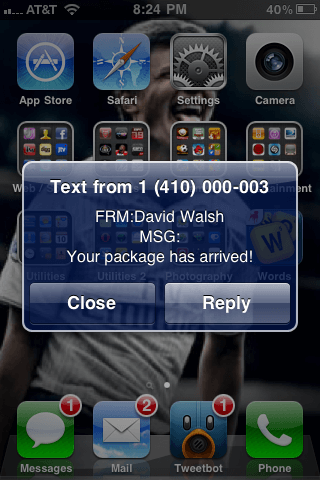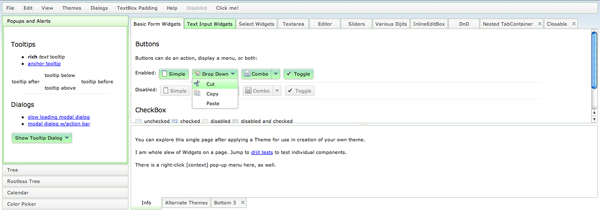CSS Ellipsis Beginning of String
I was incredibly happy when CSS text-overflow: ellipsis (married with fixed width and overflow: hidden was introduced to the CSS spec and browsers; the feature allowed us to stop trying to marry JavaScript width calculation with string width calculation and truncation. CSS ellipsis was also very friendly to accessibility.
The CSS text-overflow: ellipsis feature is great but is essentially meant to ellipsize strings only at the end; what if we want to ellipsize the beginning of a screen? The use case is fairly reasonable: think displaying a file path -- many times the directory for a set of files is the same, in which case you'd want to display the end of the string, not the beginning.
Let me show you a trick for ellipsis at the begging of the string!
The CSS
Showing an ellipsis at the front of a string is mostly the same as ellipsis at the end, only with one simple trick:
.ellipsize-left {
/* Standard CSS ellipsis */
white-space: nowrap;
overflow: hidden;
text-overflow: ellipsis;
width: 200px;
/* Beginning of string */
direction: rtl;
text-align: left;
}
To add an ellipsis at the beginning of a string, use RTL and and text-align to clip the beginning of the string!
Playing RTL off of text-align is a genius way to get the desired effect of CSS ellipsis at the beginning of an element or string. It would be great for the CSS spec to implement a more robust ellipsis system but, for now, I worship amazing CSS tricks like this!

Kids these days, I tell ya. All they care about is the technology. The video games. The bottled water. Oh, and the texting, always the texting. Back in my day, all we had was...OK, I had all of these things too. But I still don't get...

I remember the early days of JavaScript where you needed a simple function for just about everything because the browser vendors implemented features differently, and not just edge features, basic features, like addEventListener and attachEvent. Times have changed but there are still a few functions each developer should...

One interesting CSS pseudo selector is :target. The target pseudo selector provides styling capabilities for an element whose ID matches the window location's hash. Let's have a quick look at how the CSS target pseudo selector works!
The HTML
Assume there are any number of HTML elements with...

The Dojo Toolkit seems to just get better and better. One of the new additions in Dojo 1.6 was the use of LESS CSS to create Dijit themes. The move to using LESS is a brilliant one because it makes creating your own Dijit theme...







The CSS spec seems to recommend against using the
directionproperty on web pages:https://drafts.csswg.org/css-writing-modes-3/#direction
Happy to have helped!
https://stackoverflow.com/questions/9793473/text-overflow-ellipsis-on-left-side/9793669#9793669
http://jsfiddle.net/yak613/fhr2s10c/
This seems kind of strange. Where is the extra slash coming from?
This trick seems to be broken for Safari which still truncates from the back then appends the ellipsis to the front.
Chrome/FF: 12345 => …345
Safari: 12345 => …123
For anyone having issues with symbols, like the plus sign in international phone numbers, add this:
unicode-bidi: plaintext;
If anyone dealing with multiline strings to truncate i recommend using the cuttr.js (https://github.com/d-e-v-s-k/cuttr-js) library ;)
Just in case anyone else runs into this… I had an issue where if the text contained punctuation, adding
moved the punctuation marks to the beginning of the text. I solved this by appending the unicode character to the end of the string with an :after
.ellipsize-left { /* Standard CSS ellipsis */ white-space: nowrap; overflow: hidden; text-overflow: ellipsis; width: 200px; /* Beginning of string */ direction: rtl; text-align: left; } .ellipsize-left:after { content: '\200E' }